Share
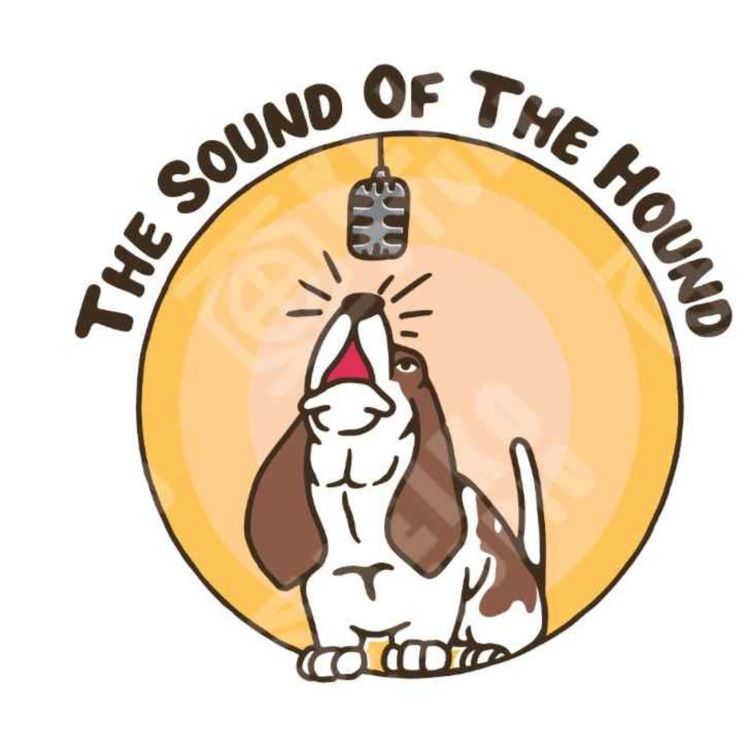
The Sound Of The Hound
#16 William Barry Owen
With these episodes focusing on the life and work of the mighty Fred Gaisberg, we may have given the impression that he was his own boss. That would be wrong. Working for The Gramophone Company in London, Fred was answerable to a man called William Barry Owen. In this episode we tell Owen’s story. It was his business acumen and vision that saw The Gramophone Company go from a pipe dream to a reality. We look at the Company through the prism of this fascinating man’s stewardship.
Despite his Welsh-sounding name, William Barry was actually from Massachusetts. A lawyer, an opportunist and a gambler, he sailed for London in 1897 to raise investment funds for the European arm of The Gramophone Company on behalf of Emile Berliner. He was, in effect, rolling the pitch for the music industry’s arrival on this side of the world. When he arrived in London, William Barry hired one of the most opulent rooms at the Hotel Cecil on the Strand for business meetings, giving the impression that he meant business. It worked. Within a matter of weeks he had assembled a small syndicate of likely investors, chief among them being a London solicitor called Trevor Williams.
The group acquired the European rights to Berliner’s gramophone but, in a move that would prove decisive for the future of recorded music, the investors forced William Barry to commit to a strategy of recording European musicians rather than simply import records from America, which was what he was proposing. It was this change in tack that led to the arrival in London from the States of a certain Mr Fred Gaisberg.
As Fred was weaving his sonic magic in Maiden Lane, William Barry (Managing Director) and Trevor Williams (Chairman) took care of business. William Barry didn’t always get things right. When the gramophone initially failed to take off, he diversified the company into typewriters, a move that didn’t work. And by the time that the company had moved into larger premises on City Road in 1902, it had already grown too big for the building. But in William Barry, we have one of the original and most often overlooked recording pioneers. So who was this man? What made him tick? And what did he do after he left the company in 1906? Dave and James find out, and play some cracking tunes along the way.
More episodes
View all episodes

11. #20 Simon Blumlein
53:57||Season 2, Ep. 11In a bonus episode to round off Series 2, Dave and James talk to Simon Blumlein about his father Alan Dower Blumlein, the extraordinary man who among others things invented stereo sound.Alan Dower Blumlein was an electronic engineer and one of the most significant inventors in the first half of the twentieth century, being responsible for 128 patents in his short life. He was invloved in the early days of telephony before joining the Columbia Graphophone Company which in 1931 merged with The Gramophone Company to create EMI.Whilst at EMI, Alan invented a whole series of technological advances to improve the recording process but perhaps his most well known invention was stereo sound.Never limited to one area of electronics, Alan was also instrumental in the successful development of television by EMI/Marconi and Simon tells of his father's exploits helping get BBC television off the ground at Alexandra Palance - stories that would make a modern day health and safety representative queasy with apprehension.He also played a significant though ultimately tragic part in the development of radar during the Second World War. Sadly the plane in which he was condusting trials with the new radar equipment crashed in June 1942 killing all who were on board, including Alan. He left behind a devastated wife and two young sons, Simon and David.Simon shares some very poignant memories of his father, who he lost when he was six years old, as well as proudly explaining some of the many significant contributions his father made to twentieth century science and electronic technology.
10. #19 Giles Martin
01:14:43||Season 2, Ep. 10This series of The Sound of the Hound ends with an interview with Giles Martin, the Grammy-winning record producer and son of Beatles producer Sir George. With this episode it feels as though we’ve come full circle: Giles was there at the plaque unveiling that we featured in the first episode of the series. And his family has a direct connection to that Maiden Lane studio where it all began. Dave and James talk to Giles about his career to date, from the early days working with Britpop bands to his big breakthrough creating the music for the Beatles-themed Love show in Las Vegas (his inspired mash-up of Within You Without You and Tomorrow Never Knows sounds like The Chemical Brothers). They talk about how production techniques have changed over time and how technology continues to alter the way music is consumed and understood. The interview takes place in Giles’s state-of-the-art studio (and we’re talking incredible) and so it’s hard not to make comparisons between today’s recording kit and the cumbersome acoustic gear that Fred and his buddies lugged around the world just over 100 years ago. Which takes us to the Martin family link to The Gramophone Company and EMI, as it was later known. Talk about six degrees of separation. If it wasn’t for Fred, then the Maiden Lane studio wouldn’t have got off the ground. If it hadn’t got off the ground, then the City Road studio wouldn’t have followed, and neither would Abbey Road, which was opened in 1931. Without Abbey Road, Giles’s dad George wouldn’t have got a job out of the Guildhall School of Music, and without his father being in Abbey Road there probably wouldn’t have been The Beatles. So you can trace a direct line from the exploits of Fred to the greatest and most important group of all time. Without one, there wouldn’t have been the other. James, Dave and Giles talk a lot about The Beatles, inevitably. Not only about the 50th anniversary editions of Sgt. Pepper’s Lonely Hearts Club Band, The White Album and Abbey Road that Giles remixed, but about how John, Paul, George and Ringo clicked. They talk about Beatles ‘what ifs…’ and try to get to the bottom of the mystery of the box of instruments that – we think – directly links Fred to Yellow Submarine. There’s so much more. Giles talks about working on the Rocketman film, on which he was music director. We discover just how you teach someone like Taron Egerton to sound like Elton John. We hear about The Rolling Stones. Giles recently remixed The Stones’ Goats Head Soup album: how did their approach to recording differ to the Fab Four’s? But, most memorably, Giles talks movingly about his father, his work and his great legacy. We hope you agree that this episode is a fitting end to the second series of The Sound of the Hound. If you’ve enjoyed it, please spread the word. See you soon.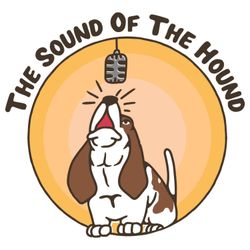
9. #18 Adelina Patti
01:02:35||Season 2, Ep. 9Bonkers, basically. The story of opera singer Adelina Patti is one of the most eye-popping of all the tales we explore in this series. The saga starts in Madrid, where Patti was born in 1843, before it takes us to Clapham in South London, moves around the world and ends in a haunted castle in Wales. As well as being in possession of a stunning voice, Patti made an absolute fortune, was friends with Tchaikovsky, was a billiard champion, owned one of the world’s first ice-making machines, and built a theatre in her back garden decorated with images of herself and kitted out with a mechanical auditorium floor. She once threw a party where 450 bottles of Champagne were drunk. Who ever said that opera was boring? If it weren’t for the pandemic, Dave and James were planning to record this episode on location at Patti’s former pile in Wales. Instead, they’re relying on documents and diaries – and their brilliant regular guest Michael Volpe – to tell the story of Patti’s madcap 63-year career. A child prodigy, Patti remains one of the legends of opera. She made her professional debut in 1859 in New York when she was 16, before being invited to sing at Covent Garden two years later. She was a smash so she… bought a house in Clapham. She used it as a base to conquer Europe. Soon she was touring the world, singing for Presidents and royalty. So in demand was Patti, it is said, that she could demand to be paid $5,000 a night IN GOLD in advance. That’s the equivalent of $100,000 a night in today’s money. We don’t want to spoil the story but we can’t wait for you to hear this episode. Patti left her recording until the end of her career, when Fred and colleagues went to her Welsh castle with their gear to capture her voice. Their recollections of what went on there are recounted here in their incredible detail. Although her voice was not in its prime due to her age, the Patti recordings are things of beauty. You can almost hear the stories, and the scars and bumps of a life well lived, in the songs she committed to the gramophone. We hope you enjoy it all.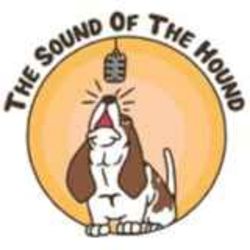
8. #17 Nellie Melba
53:15||Season 2, Ep. 8Melba toast. Peach Melba. Melba sauce. Why are we listing foodstuffs (and sounding a bit like Alan Partridge in the process)? Because they are all named after the subject of this episode of The Sound of the Hound, Nellie Melba. The soprano was one of the most famous singers of the era – and it was Fred who captured her voice for us to enjoy over 100 years later. Melba was born in Victoria, Australia, in 1861 and moved to Europe in the mid-1880s in search of a singing career. Nothing really happened in London so she went to Paris and found success there. Curious, romantic and demanding, Melba soon became a household name in opera houses around the world. Although she recorded some phonograph cylinders in New York in 1895, she hated them (a “scratching, screeching” noise, “never again,” she declared). It fell to Fred, his brother Will and their associate Landon Ronald to change her mind. “Melba was more than a prima donna. She was in the diva class, and well she knew it,” Fred wrote. But in early 1904, they captured her voice. The session was not without its problems. The biggest one was that she demanded the recording took place in her Great Cumberland Place flat in London – complete with a full orchestra. She was “dominant” and “harsh” and, despite all the work, refused to let The Gramophone Company release the recordings. It took all of Fred’s guile to persuade her to finally release them. Once out, they sold like hot cakes, increasing her fame. Her recording sessions then became events in themselves. Journalists were invited, and Melba even had her own coloured label on her discs. Indeed, the initially reluctant singer lapped it all up, becoming something of a recording pioneer; she did a live radio broadcast and her last appearance at Covent Garden in 1926 was recorded by His Master’s Voice and broadcast. She became a Dame. So famous was she that another Dame, Kiri Te Kanawa, played her in Downton Abbey. Michael Volpe joins us to discuss this memorable singer, her unique voice and her incredible legacy.
6. #15 Sinkler Darby
34:58||Season 2, Ep. 6Every hero has a sidekick. And in this episode we tell the story of Fred’s wingman, the wonderfully named William Sinkler Darby. Five years Fred’s junior, fellow American Sinkler was by his boss’s side as he established The Gramophone Company in London and travelled the world to capture sound. Their tale is like a buddy movie: it’s Batman & Robin meets The Hangover meets Lethal Weapon (if the weapon in question is an unwieldy mobile recording rig). Darby first worked with Fred in Emile Berliner’s laboratory in Washington DC in the summer of 1897 (he got a job that Fred’s brother Will had initially wanted, only to be banned by their father). Once in London, Darby proved himself to be the most reliable partner imaginable. He helped Fred in the newly established Maiden Lane studio before they headed to mainland Europe to make the Company’s first continental recordings. Leipzig, Vienna, Budapest, Paris, Milan… they visited them all. There was a definite element of ‘boys on tour’ to these trips, as Dave and James find out in this episode. There were many escapades, including a curious story involving a sausage in a sweltering train carriage in Spain. They then toured the UK and Ireland, recording in Scotland, Dublin and elsewhere. Darby was also with Fred on their ground-breaking recording expedition to Russia in 1900. But this was more than a Victorian bromance. The duo recorded hundreds of historic recordings. Darby was an accomplished engineer himself, and helmed plenty of recording sessions himself, both at Maiden Lane and at the City Road studio that followed. We play a selection of those tracks here. Perhaps keen to emerge from Fred’s shadow, Darby went it alone with an interesting venture that we explore in this episode. The history of recorded music is packed with characters. But it’s unlikely that a duo exist who did so much to kick-start the music industry as these two, and – frankly – had so much fun doing it.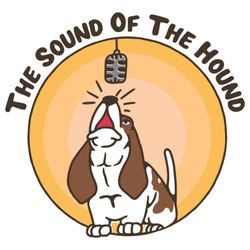
5. #14 Feodor Chaliapin
59:56||Season 2, Ep. 5In this episode we look at the epic – and we mean epic – story of Russian bass singer Feodor Chaliapin. The singer’s relationship with Fred spanned decades, continents, wars and revolutions. It is a tale about music but it is also a tale about the extraordinary power of friendship. And spats. It’s a story about spats. And potatoes. And backstage punch-ups. This episode really does have it all. Chaliapin was a big beast of a man with one of the deepest and most expressive voices you can imagine. He was born in the same year as Fred, 1873, but on the other side of the world, in Kazan in Russia, and into poverty. He took to singing as a youngster and, shortly after his 20thbirthday, was performing at the Imperial Opera in St Petersburg. Fred first heard him in 1900 when he was in the city scouting for talent. He immediately made moves to record this “enormous young bass” singer, but Chaliapin would not respond to his overtures. Again and again Fred tried but, despite becoming friends, it wasn’t until 1910 that they signed a contract (with steep terms dictated by the Russian). The recordings were tricky. The thin-skinned Chaliapin would only record at certain times of the day and was partial to raucous vodka-fuelled parties, which one imagines Fred only mildly resisted. A strong bond was formed. Chaliapin sung in front of the British royal family in London but not before the burly bass got involved in a backstage fist fight. He was on the cusp of global fame and untold riches when the First World War broke out. Back in Russia with his family, Chaliapin was thrust back into poverty. He was paid in potatoes and lived in rags. It took a daring and covert mission by Fred to get him out of Russia (with the help of author H.G. Wells) and smuggle him back to England. Here, Chaliapin indulged in his love for fine tailoring and shoes and, of course, singing. Sell-out crowds treated this great, bruised singer as something of a hero. He and Fred went to America (eventful, inevitably) and stayed close until Chaliapin’s death in Paris in 1938. This story has to be heard to be believed. We are joined in this episode once again by Michael Volpe.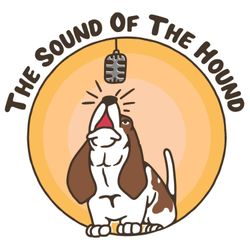
4. #13 Emma Calve
38:24||Season 2, Ep. 4Diva alert! In episode four, Holley and Hall tell the story of the recording of one of opera’s greatest characters, Emma Calvé. Basking in the glory of having captured the voice of the mighty Enrico Caruso in Milan (as outlined in Series One of The Sound of the Hound), Fred goes on something of a recording spree back in London. But he gets more than he bargained for with Calvé, who proves to be something of a handful.Calvé, who is today seen as one of the greatest opera singers of the Belle Epoque era, had made her name playing the lead role in Carmen when Fred records her (indeed, her interpretation of the role is still widely used today). But Fred and his team discover that the character’s feistiness is not confined to the stage when they try to coax Calvé into their Covent Garden studio. Holley and Hall tell the tale of this complex French diva, and play some of her famous – or as Fred would no doubt have it – infamous recordings. Her dissatisfaction with one of her tracks was caught on disc, and we play it here. We are joined in this episode for the first time by our new regular guest Michael Volpe, the founder and former general director of Opera Holland Park. Michael brilliantly dissects Calvé’s voice and gives us an insight into her career. He also tells us if, to put it bluntly, she was really any good.
3. #12 To Japan
41:46||Season 2, Ep. 3After India, Fred goes to the Far East. But when he arrives in Tokyo in January 1903, he is rocked by some terrible family news. Stuck on the other side of the world, Fred does what he’s done countless times before: he throws himself into his job. Once the crates and crates of equipment are finally released by Japanese customs, he embarks on a recording frenzy.In one day alone he makes some 54 records. However he isn’t a fan of the music, initially at least. It is, he said, “too horrible for words”. But as the weeks pass, he warms to it. A world of new instruments and sounds open up to him. He makes disc after disc, some of which Holley and Hall play here.Fred throws himself into the local culture. The story of his trip to a Japanese theatre is something to behold. After Japan, Fred heads to China, Thailand, Burma and elsewhere. In this episode we recount these travels, looking at his early 20th century experiences through a 21st century prism. But if his escapades sound like little more than a sonic gap year, think again. There is a serious side to it all. In travelling to parts of the world where the gramophone is – at best – a strange curio, Fred plants the seeds of the modern music industry. And he does it with all the humour, vigour and eccentricity that we’ve come to expect from him.